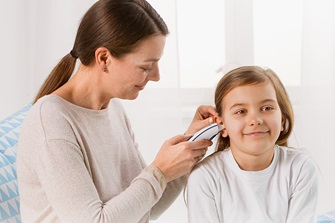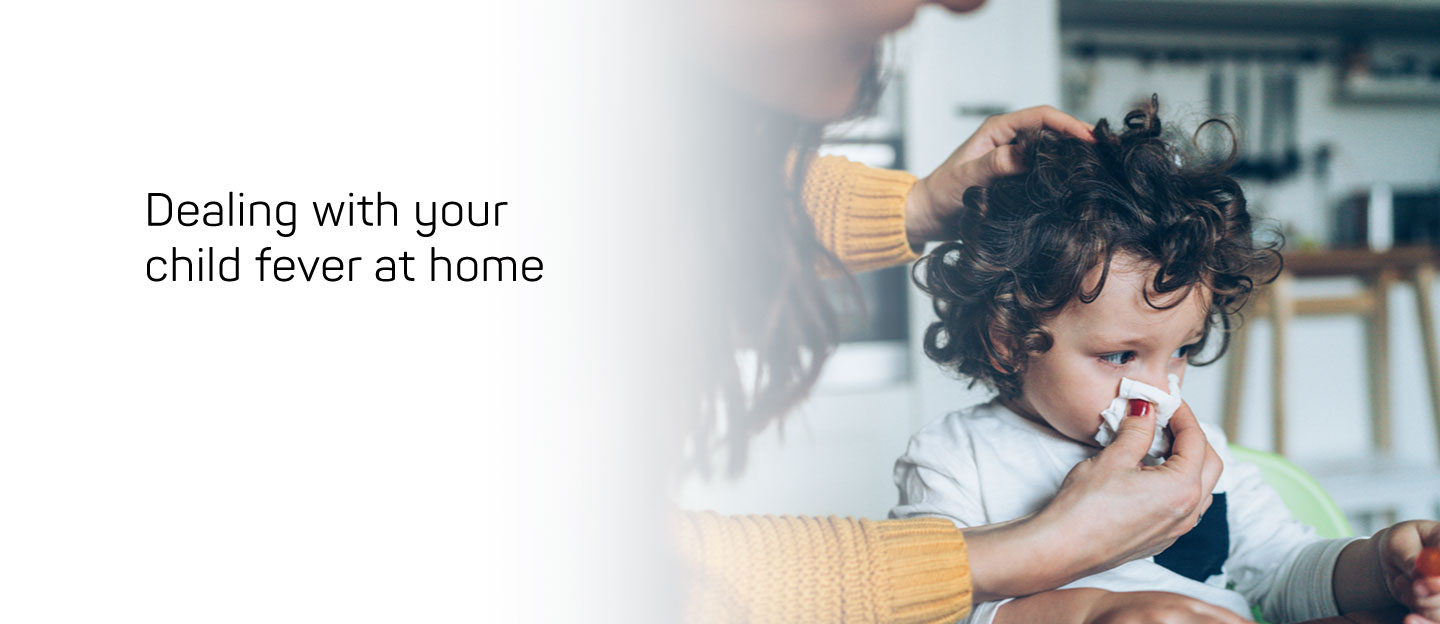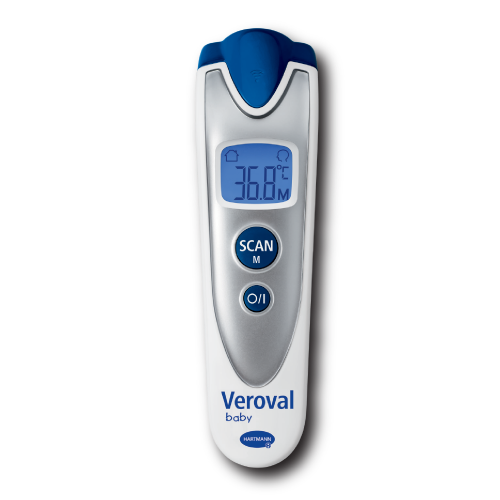Ear caps more than just hygiene


Of course, you’re worried because your baby is not well. So it's good to know that fever is a major natural defense mechanism of the body. Fever indicates that the body responds to infectious agents, such as viruses and bacteria or tissue injuries, and mobilizes its defenses. The body does so because fever can support the functioning of the immune system, and at high body temperature, viruses and bacteria cannot reproduce. Fever is therefore a necessary reaction of the body, and in most cases it is not recommended to counteract with the help of antipyretic measures yourself.
Fever is best described as a body temperature that rises above the normal value. The table below helps you to determine the normal and elevated body temperature up to fever, depending on the measurement site:
Table of measured values (in °C):
| Measurement site | |||
| Description | Ear / forehead | Rectum | Mouth / armpit |
| Subnormal temperature | <35.7 | <36.2 | <35.8 |
| Normal temperature | 35.8 - 36.9 | 36.3 - 37.4 | 35.9 - 37.0 |
| Elevated temperature | 37.0 - 37.5 | 37.5 - 38.0 | 37.1 - 37.5 |
| Slight fever | 37.6 - 38.0 | 38.1 - 38.5 | 37.6 - 38.0 |
| Moderate fever | 38.1 - 38.5 | 38.6 - 39.0 | 38.1 - 38.5 |
| High fever | 38.6 - 39.4 | 39.1 - 39.9 | 38.6 - 39.5 |
| Very high fever | 39.5 - 42.0 | 40.0 - 42.5 | 39.6 - 42.0 |
You should also remember to pay attention to the time of day, because the body temperature is usually lower in the morning than in the evening. The temperature should always be taken at the same time of day so that the value is not misinterpreted.
Especially with very small children, it is often recommended to seek help, although increased temperature or fever is normal in babies. Generally, babies and small children are more often sick and suffer more often from increased temperature or fever than adults. That is because their inexperienced immune system has to develop over time through exposure to various pathogens. A high temperature or persistent fever requires medical treatment, especially in small children. In these cases, please consult your doctor.
Most of the time, fever can be detected by visible and tangible factors: The baby has a flushed face or skin that is warm to the touch – especially on the forehead and the neck. On the other hand, feet and arms may feel cold. Your baby’s eyes are probably tired-looking or glassy, and the heart rate is more rapid than usual. Some babies may be whiny, sleepy, and noticeably unwell. They may also show dizziness and weakness. Perspiration, chills, shaking, and shivering are also signs that can be observed sometimes. Your baby may show a low appetite, or even refuse food altogether. Keep in mind that not all of the symptoms occur or appear at the same time. Some children, however, may also show normal behavior during fever. They appear to be in good condition, and eat and drink normally. Especially in this case, you don’t need to be worried – your baby is coping with the fever just fine.
